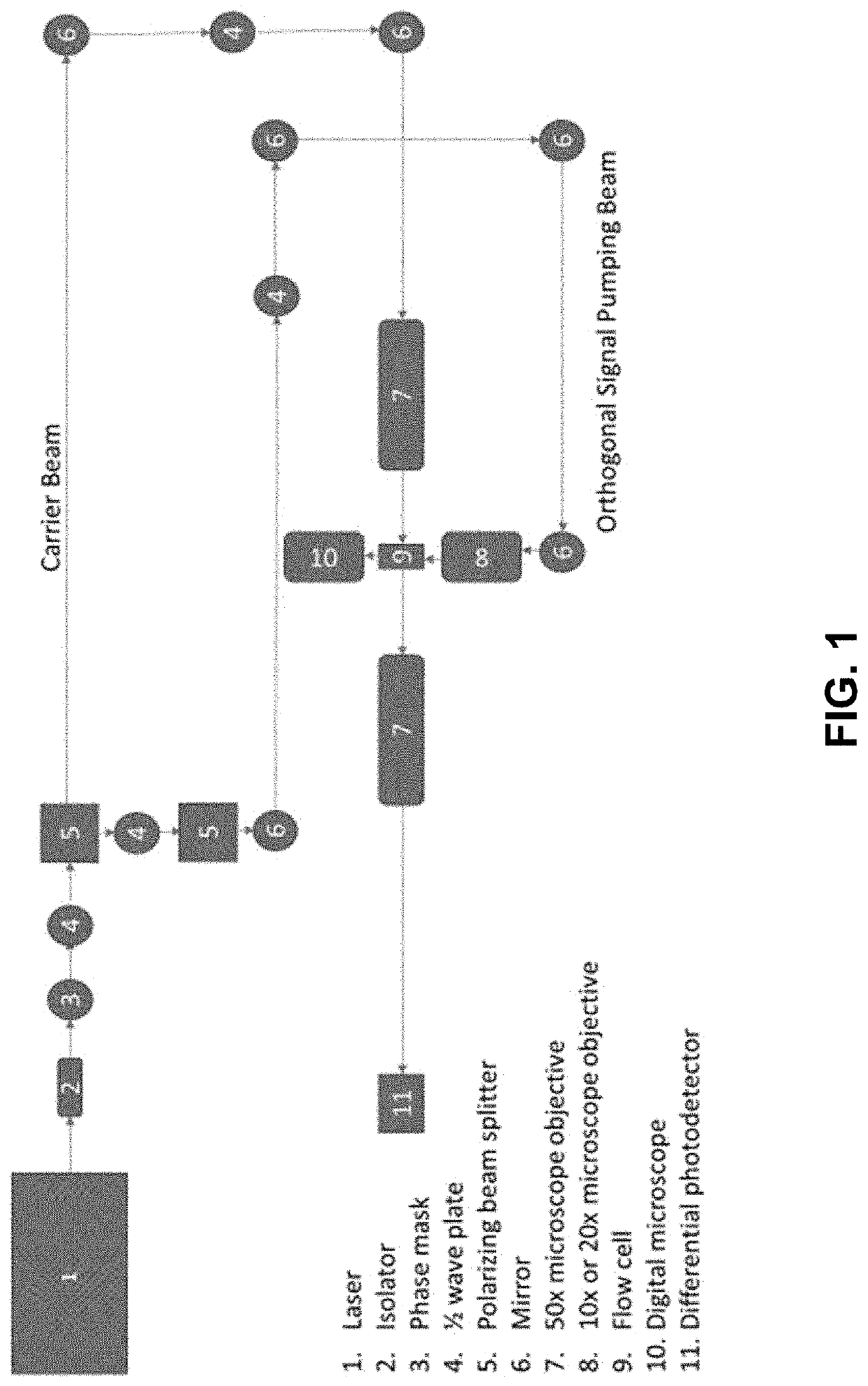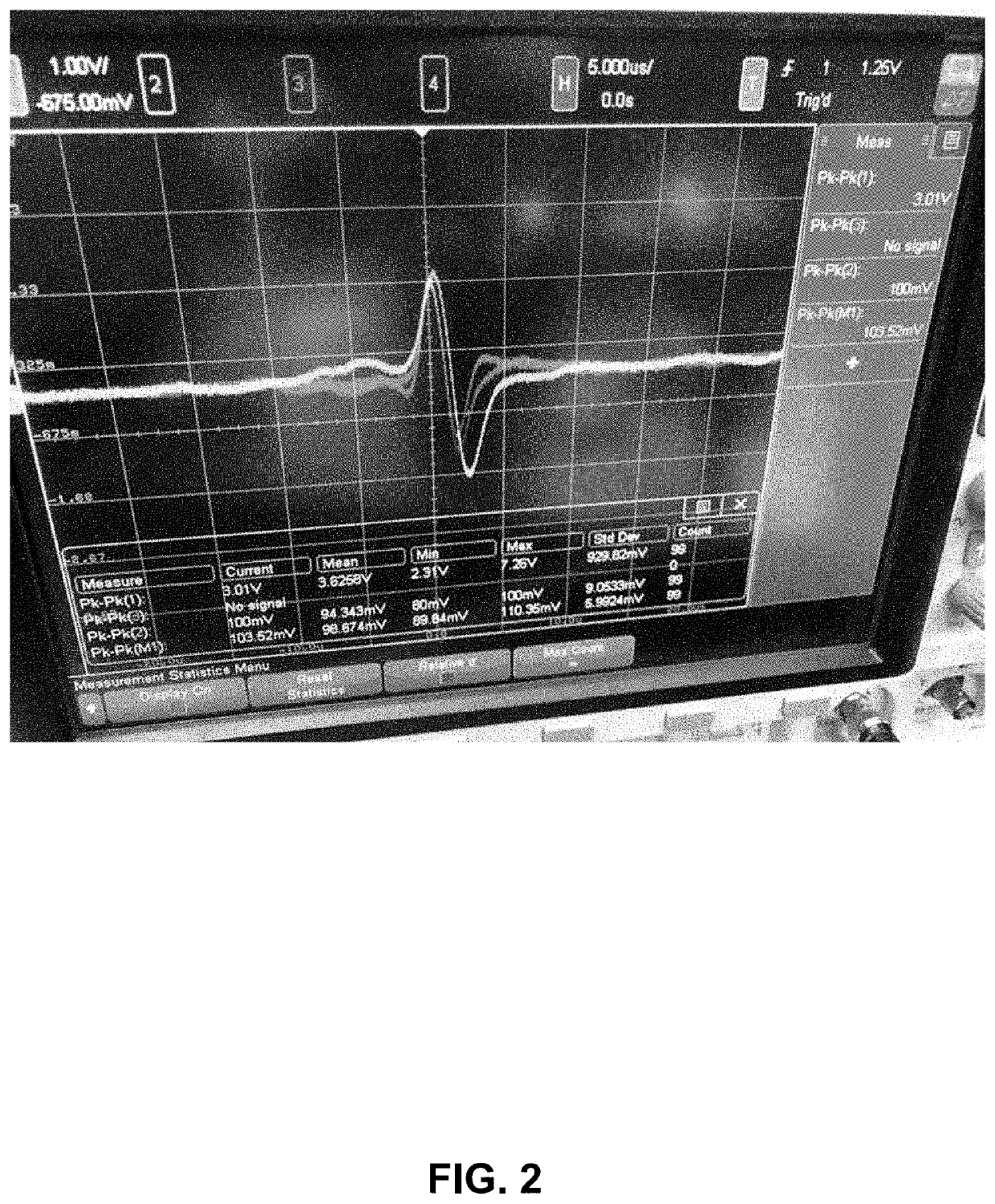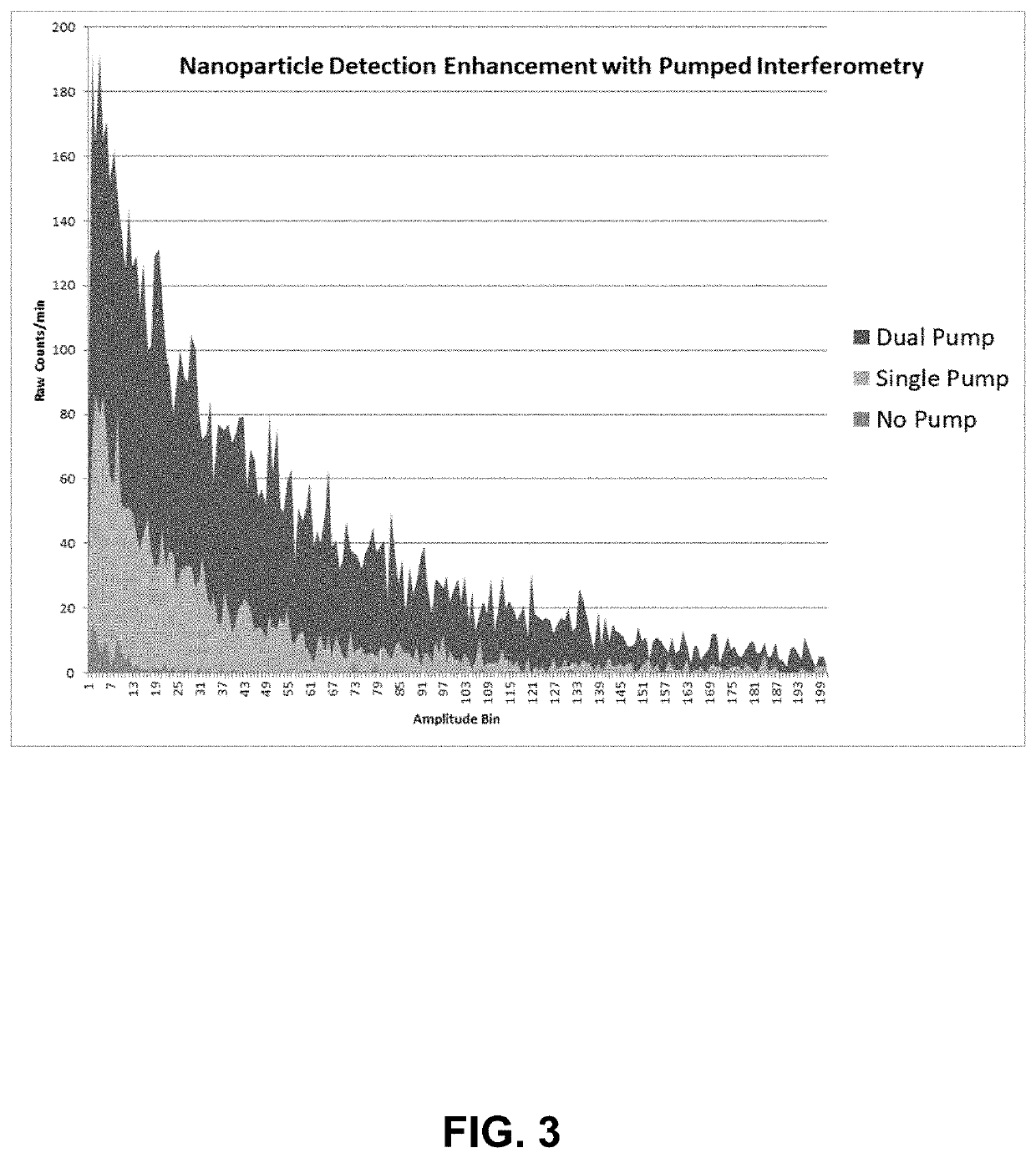Particle detection via scattered light combined with incident light
- Summary
- Abstract
- Description
- Claims
- Application Information
AI Technical Summary
Benefits of technology
Problems solved by technology
Method used
Image
Examples
example 1
ss Pump Beam Nanoparticle Detection
[0111]Turning now to FIG. 1, an example of a single pass pump beam particle detection system is shown. The illustrated system includes a light source 1, an isolator 2, a phase mask 3, a plurality of ½ wave plates 4, two polarizing beam splitters, a plurality of mirrors 6, a pair of microscope objectives 7, a flow cell 9, a digital microscope 10, and a photodetector 11. As can be seen, source 1 produces a beam of light which is passed through the isolator 2, then a phase mask 3 and a ½ wave plate 4. The beam is then split into an incident beam (labeled Carrier Beam) and an orthogonal signal pumping beam via polarizing beam splitter 5. The incident beam is routed through another ½ plate 4, through the first microscope objective 7 and then through the interrogation zone (flow cell 9). After passing through the flow cell 9, the incident beam is then passed through the second microscope objective 7 and finally is directed onto the photodetector. After b...
example 2
Disposed in the Opposite Direction as the Incident Beam in the Interrogation Zone
[0113]Turning now to FIG. 6, in one embodiment, the pump beam may intersect the interrogation zone in the opposite direction as the incident beam. As can be seen, a polarizing beam splitter may be used to split a beam into an incident beam and a pump beam. The incident beam may be directed via mirrors (M1, M2) through a ¼ wave plate, the flow cell, and another ¼ wave plate. The pump beam may be directed, via M3 through the same two ¼ wave plates which sandwich the flow cell, but in the opposite direction as the incident beam. Thus, the incident beam, forward scattered light from the incident beam and back-scattered light from the pump beam may all be combined and collected on the photodetector array.
example 3
Beams
[0114]Turning now to FIGS. 7-9, in one embodiment, a diffractive optical element may be used to increase the volumetric sampling rate of a particle monitoring system. FIG. 7 shows one example. As shown, the particle monitoring system includes a diffractive optical element 12 in the optical path of the incident beam. The diffractive optical element 12 functions to produce an array of beams. FIG. 8 shows a schematic diagram of the effect of the diffractive optical element on a beam of light. As the light travels from left to right, the diffractive optical element, located on the left edge of the schematic diffracts the light into, in this case, 5 beams of essentially equal intensity.
[0115]The plurality of beams is directed through a fluid flow, which contains particles. The waist of each beam is imaged onto an upper and lower pair of detector elements. FIG. 9 shows the 1-dimensional array of beams produced from the diffractive optical element. By directing the array of beams thro...
PUM
 Login to View More
Login to View More Abstract
Description
Claims
Application Information
 Login to View More
Login to View More - R&D
- Intellectual Property
- Life Sciences
- Materials
- Tech Scout
- Unparalleled Data Quality
- Higher Quality Content
- 60% Fewer Hallucinations
Browse by: Latest US Patents, China's latest patents, Technical Efficacy Thesaurus, Application Domain, Technology Topic, Popular Technical Reports.
© 2025 PatSnap. All rights reserved.Legal|Privacy policy|Modern Slavery Act Transparency Statement|Sitemap|About US| Contact US: help@patsnap.com



